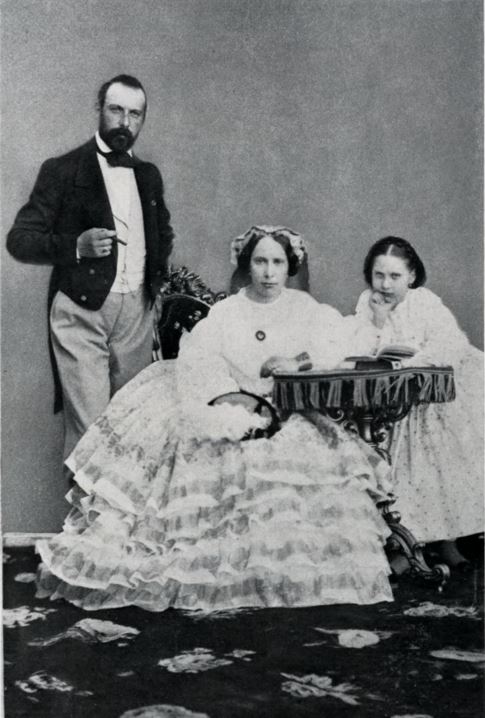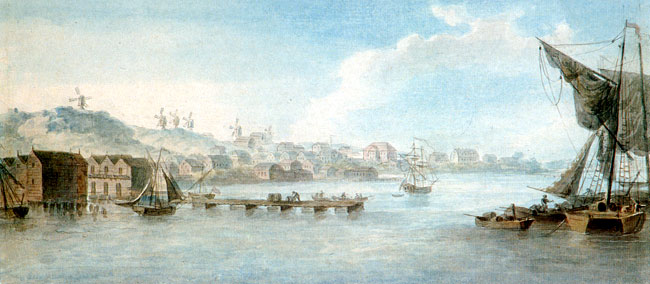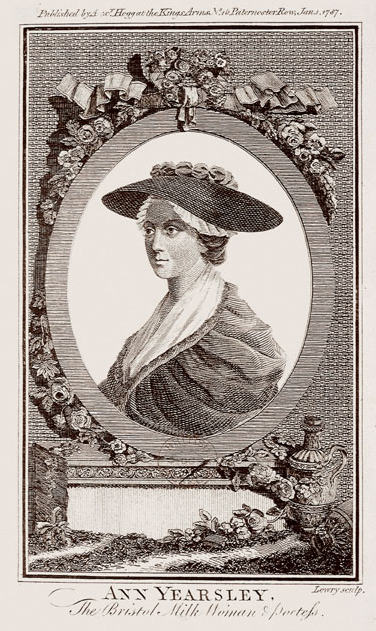|
Lovisa
Lovisa is a Swedified form of Louise, which originates in Louis and has been used in Sweden since the 17th century. It was placed in the Swedish calendar in the 1750s after king Adolf Fredericks marriage to Lovisa Ulrika of Prussia in 1744. Lovisa means fighter. The name Lovisa had a rejuvenation in the 1980s and 90's in Sweden but has since then begun to decline. Lovisa is placed in the Swedish calendar ( namnsdag) on August 25. Famous people with the name Lovisa Royalty * Lovisa of Sweden, Queen of Denmark * Lovisa Ulrika of Prussia, Queen of Sweden Artists * Lovisa Augusti, opera singer, member of the Swedish Royal Academy of Music * Brigitte Lovisa Fouché, artist * Greta Lovisa Gustafsson (aka Greta Garbo), actress Other famous people * Lovisa Åhrberg, doctor and surgeon * Lovisa von Burghausen, Swedish prisoner of war, known for her life as a slave in Russia * Sofia Lovisa Gråå, educator and principal * Agatha Lovisa de la Myle (died 1787), Baltic-German and Latv ... [...More Info...] [...Related Items...] OR: [Wikipedia] [Google] [Baidu] |
Lovisa Von Burghausen
Lovisa von Burghausen (1698 – 20 January 1733) was a Swedish memoirist who became famous for her story about her time in captivity as a slave in Russia after being taken prisoner by the Russians during the Great Northern War. She was sold as a slave several times before she eventually recovered her freedom, and her story became perhaps the most famous of the many stories of Carolinian fates of this period. Kidnapped Lovisa was born in the city of Narva in Swedish Estonia, one of five daughters to the noble Swedish major Gustaf von Burghausen and Margareta von Brundert. Her father had been taking part in the defence of the city when it was taken by the Russians after the Battle of Narva (1704). During the chaotic pillage of the city, Lovisa was separated from her family and taken captive by a Russian soldier.Åberg, Alf (1991). Fångars elände: karolinerna i Ryssland 1700-1723. Misery of prisoners. The Carolinians in Russia 1700-1723'Stockholm: Natur & Kultur. Libris 7 ... [...More Info...] [...Related Items...] OR: [Wikipedia] [Google] [Baidu] |
Lovisa Of Sweden
Louise Josephine Eugenie of Sweden ( sv, Lovisa Josefina Eugenia; 31 October 1851 – 20 March 1926) was Queen of Denmark from 1906 until 1912 as the spouse of King Frederick VIII. Born into the House of Bernadotte, Louise was the only surviving child of King Charles XV of Sweden and Norway and his consort, Louise of the Netherlands. Although her father made several attempts to have her recognized as his heir, she was barred from the succession as at the time only males could ascend the throne of Sweden. In 1869, she married the future King Frederick VIII of Denmark, with whom she had eight children. Louise became queen of Denmark in 1906. As queen, she was mainly known for her many charity projects, an interest that she shared with her spouse. She did not care for ceremonial duties and public events, and lived a discreet life dedicated to her children and her interests in art, literature and charity. After a short tenure as queen, she was widowed in 1912. Louise was the moth ... [...More Info...] [...Related Items...] OR: [Wikipedia] [Google] [Baidu] |
Loviisa
Loviisa (; sv, Lovisa ; formerly Degerby) is a municipality and town of inhabitants () on the southern coast of Finland. It is located from Helsinki and from Porvoo. About 43 per cent of the population is Swedish-speaking. The municipality covers an area of of which is water. The population density is . The neighboring municipalities of Liljendal, Pernå and Ruotsinpyhtää were consolidated with Loviisa on 1 January 2010. Loviisa was founded in 1745, as a border fortress against Russia. Most of the fortifications have been preserved. Loviisa was originally called ''Degerby'', but king Adolf Frederick of Sweden renamed the city after his spouse Lovisa Ulrika after visiting the town in 1752. Loviisa is the site of two of Finland's nuclear reactors, two VVER units each of 488 MWe, at the Loviisa Nuclear Power Plant. The other operating reactors are at the Olkiluoto Nuclear Power Plant. History 18th century The town of Degerby was founded on the grounds of the ... [...More Info...] [...Related Items...] OR: [Wikipedia] [Google] [Baidu] |
Lovisa Åhrberg
Maria ''Lovisa'' Åhrberg or ''Årberg'' (17 May 1801 – 26 March 1881) was a Swedish surgeon and doctor. She was lawfully practicing surgeon long before it became formally permitted for women to study medicine at a university in 1870. Lovisa Åhrberg could be regarded as the first female physician in Sweden with formal permit from the authorities to practice medicine: however, she had no formal training, and the first woman physician with a university degree was to be Karolina Widerström. Biography Lovisa Åhrberg was born in Uppsala in Uppland as the daughter of Erik Årberg, a caretaker of the Uppsala University, and the cunning woman Britta Maria Upgren. Her grandmother had also reportedly been an active practitioner of "folk medicine" and nursing. In the early 19th-century, nurses were merely uneducated helpers to the doctors. During her childhood, Lovisa accompanied her mother to hospitals as well as visits to the houses of sick people. She was never formally a student ... [...More Info...] [...Related Items...] OR: [Wikipedia] [Google] [Baidu] |
Lovisa Augusti
Lovisa Sofia Augusti (born Ester Salomon; 1751 or 1756 – 25 June 1790) was a Swedish opera singer (soprano). She was regarded as one of the most noted opera singers of the Royal Swedish Opera during the Gustavian era. She was appointed ''Hovsångare'' in 1773 and inducted to the Royal Swedish Academy of Music in 1788. Life Early life Lovisa Augusti was born in Germany under the name ''Ester Salomon'' as the daughter of the travelling Jewish-German musician Israel Salomon. She was trained as a singer, while her brother Carl Friedrich Wilhelm Salomoni was trained as a violinist. In 1766, she arrived in Sweden with her brother and father. They hare noted to have performed in Varberg in that year, when her brother played the violin while she sang Italian arias. She performed in a concert with a musician of the royal '' Hovkapellet'' , Francesco Antonio Uttini on 22 February 1767 in Gothenburg, where she made a success. On 25 March 1767, she converted to Lutheranism ... [...More Info...] [...Related Items...] OR: [Wikipedia] [Google] [Baidu] |
Louisa Ulrika Of Prussia
Louisa Ulrika of Prussia ( sv, Lovisa Ulrika; german: Luise Ulrike) (24 July 1720 – 16 July 1782) was Queen of Sweden from 1751 to 1771 as the wife of King Adolf Frederick. She was queen mother during the reign of King Gustav III. Background Louisa Ulrika was born in Berlin as the daughter of Frederick William I of Prussia and his wife Sophia Dorothea of Hanover, and was thus a younger sister of both Wilhelmine of Bayreuth and Frederick the Great. She was given the Swedish name Ulrika because Queen Ulrika Eleonora of Sweden had been her god mother. She exchanged letters with her godmother, and it was thought that she would marry a future son by Ulrika Eleonora, as Ulrika Eleonora herself had once been considered as a consort for Louisa Ulrika's father. However, Ulrika Eleonora remained childless. Louisa Ulrika was described as beautiful, intelligent, with a fierce temperament and a strong will. She was given an advanced education in accordance with the French age of enlig ... [...More Info...] [...Related Items...] OR: [Wikipedia] [Google] [Baidu] |
Greta Garbo
Greta Garbo (born Greta Lovisa Gustafsson; 18 September 1905 – 15 April 1990) was a Swedish-American actress. Regarded as one of the greatest screen actresses, she was known for her melancholic, somber persona, her film portrayals of tragedy, tragic characters, and her subtle and understated performances. In 1999, the American Film Institute ranked Garbo fifth on its list of the AFI's 100 Years...100 Stars, greatest female stars of classic Hollywood cinema. Garbo launched her career with a secondary role in the 1924 Swedish film ''The Saga of Gosta Berling, The Saga of Gösta Berling''. Her performance caught the attention of Louis B. Mayer, chief executive of Metro-Goldwyn-Mayer (MGM), who brought her to Hollywood in 1925. She stirred interest with her first American silent film, ''Torrent (1926 film), Torrent'' (1926). Garbo's performance in ''Flesh and the Devil'' (1927), her third movie, made her an international star. In 1928, Garbo starred in ''A Woman of Affairs,'' which ... [...More Info...] [...Related Items...] OR: [Wikipedia] [Google] [Baidu] |
Brigitte Lovisa Fouché
Brigitte Lovisa Fouché (born 1958) is a French painter born in Dax (South of France). After graduating from the École nationale supérieure des arts appliqués et des métiers d'art (ENSAAMA), Olivier de Serres in Paris, she worked for 15 years as a glazier painter for Sylvie Gaudin's studio. Specialising in mural A mural is any piece of graphic artwork that is painted or applied directly to a wall, ceiling or other permanent substrate. Mural techniques include fresco, mosaic, graffiti and marouflage. Word mural in art The word ''mural'' is a Spani ... art, Fouche has painted a large collection of acrylic formats in vivid colors and deconstructed patterns. '''A brother gone to Polynesia remains one of her claimed inspirations. References Links Official websiteArtrinet critic of Fouche's works 1958 births Living people French women painters 20th-century French women artists 21st-century French women artists {{France-painter-20thC-stub ... [...More Info...] [...Related Items...] OR: [Wikipedia] [Google] [Baidu] |
Sofia Lovisa Gråå
Sofia Lovisa Gråå née ''Palm'', (1749 – 8 May 1835ssa.stockholm.seKlara döda/ref>) was a Swedish educator of actors, and noted for innovations that in modern times would be described as feminist. Biography Sofia Lovisa Palm was from 1788 married to Fredrik Gabriel Gråå, the interpreter for the Russian embassy in Stockholm, who died in 1795. She was principal of the Royal Dramatic Training Academy, the acting school of Sweden's Royal Dramatic Theatre, in Stockholm, from 1804 to 1812. She also, during her period as principal, oversaw student housing, with the female students in fact living in her home. Gråå advocated for continuation of the French acting traditions introduced in the 1793–1798 tenure of the French-born and -trained Anne Marie Milan Desguillons and her husband Joseph. She was the first woman to hold this position alone. It was a difficult position at this point, during the temporary dissolution of the Royal Swedish Opera in 1806–09, which caused confus ... [...More Info...] [...Related Items...] OR: [Wikipedia] [Google] [Baidu] |
Agatha Lovisa De La Myle
Agatha Lovisa de la Myle née Brumengeber or Brunnengräber (30 August 1724 - 1 September 1787), was a Finnish (originally Baltic German) poet and correspondent, " lady of letters". Born in Courland as the daughter of the clergyman Anders Brumengeber, she married her nephewBrumengeber eller Brunnengräber, Agatha Lovisa , in Wilhelmina Stålberg, ''Anteckningar om svenska qvinnor'' (1864–1866) Captain Carl Johan de la Myle in 1750, and moved to the Swedish province of Finland with him in 1762. She wrote poetry in German and Latvian, and was said to "unite a lively sense of religion and virtue with the gif ... [...More Info...] [...Related Items...] OR: [Wikipedia] [Google] [Baidu] |
Louise (given Name)
Louise and Luise are, respectively, French and German feminine forms of Louis. Louise has been regularly used as a female name in English speaking countries since the middle of the 19th century. It has ranked among the top 100 names given to girls in France, England, Ireland, Scotland, Sweden and Wales in recent years. It last ranked among the top 1,000 first names for girls born in the United States in 1991, but remains a more common middle name. Feminine variants *Aloisia: German, Italian, Spanish *Aloisie: Czech *Alojza: Polish *Alojzia: Hungarian, Slovak *Alojzija: Slovene *Heloísa: Portuguese *Labhaoise: Irish *Liudvika: Lithuanian *Lluïsa: Catalan *Loes: Dutch *Lou: English, French *Louella: English *Louisa: English *Louise: Danish, Dutch, English, French, Norwegian, Swedish *Louiza: Greek (Λουίζα), Kabyle *Louize: Dutch, French, German, English *Lova: Swedish *Liisa: Finnish, Estonian *Loviisa: Finnish *Loviise: Estonian *Lovisa: Swedish *Lovise: Danish, Norwegi ... [...More Info...] [...Related Items...] OR: [Wikipedia] [Google] [Baidu] |
1787 In Poetry
Nationality words link to articles with information on the nation's poetry or literature (for instance, Irish or France). Events * April 17 – The Edinburgh edition of Scottish poet Robert Burns' ''Poems, Chiefly in the Scottish Dialect'' is published by William Creech including a portrait of Burns by Alexander Nasmyth. Burns has great social success in the city's literary circles; 16-year-old Walter Scott meets him at the house of Adam Ferguson. On December 4 he meets Agnes Maclehose at a party given by Miss Erskine Nimmo. Works published United Kingdom * Robert Burns: ** ''Poems Chiefly in the Scottish Dialect'' (see also the editions of 1786, 1793) ** see also Richard Glover's ''The Scots Musical Museum'', below * Anne Francis, ''Charlotte to Werter'' * Richard Glover, ''The Atheniad'' * James Johnson, editor, ''The Scots Musical Museum'', an anthology with 177 of the 600 songs written by Robert Burns, who had collected many of the others; published in six v ... [...More Info...] [...Related Items...] OR: [Wikipedia] [Google] [Baidu] |




